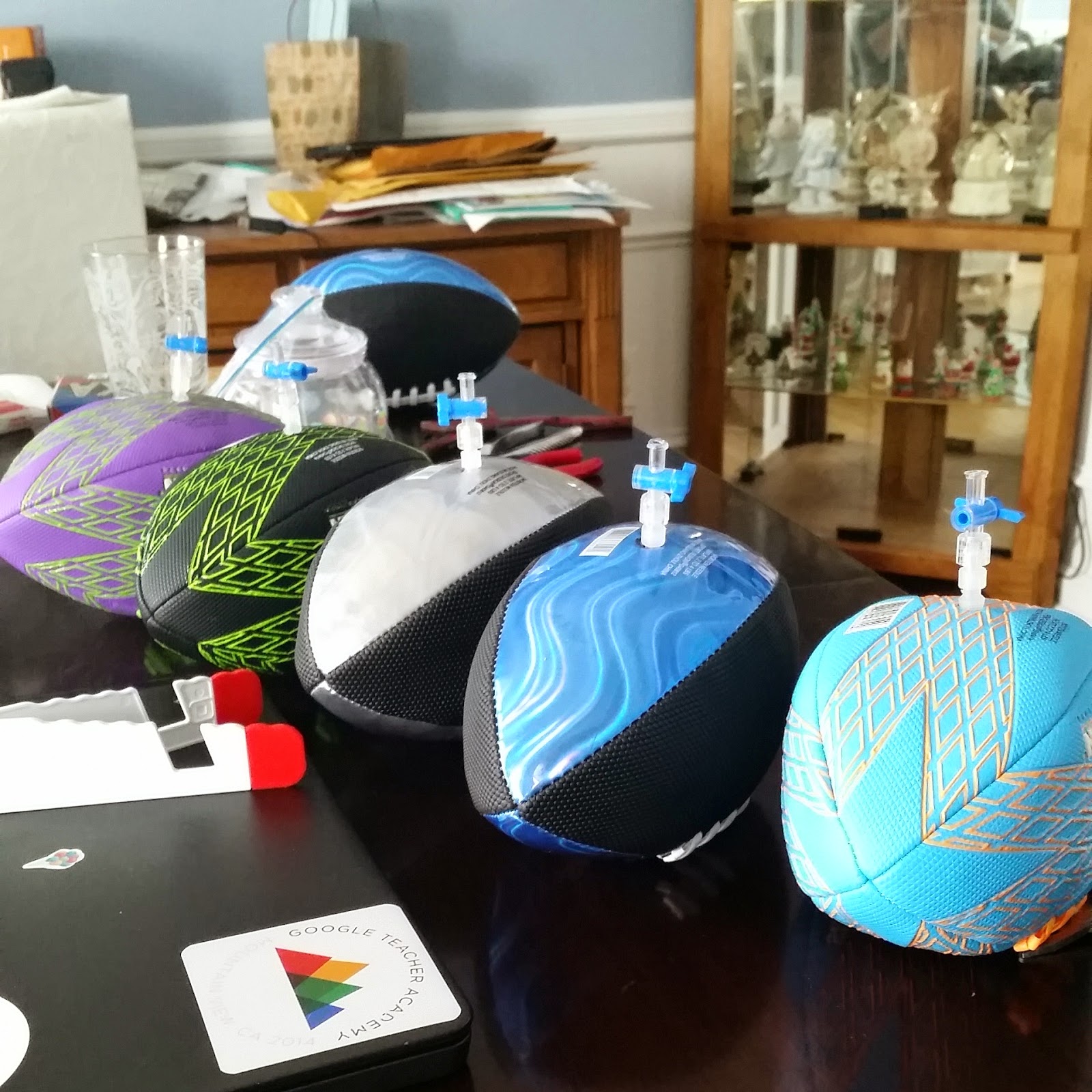In case you were living under a rock, during the AFC Championship game, it was found that the New England Patriots deflated their footballs by about 2 psi. The ensuing scandal was named Deflategate by the media. At a press conference, about a week later, the Patriots organization claimed that the rapid change in air temperature from their equipment room (approximately 72F) to the football field (approximately 47F) caused the pressure to drop.
A colleague (Mr. B) came to me and said that he saw a piece on a news channel that had Bill Nye the Science Guy facing off against a Harvard professor debating whether Chemistry was at fault for the pressure drop. It was very West Coast vs. East Coast like the Super Bowl was going to be. And, let's just say, that people need to stop doubting the genius that is Bill Nye.
Anyway, any good Chemistry teacher knows that the relationship between Pressure and Temperature of a gas is directly proportional so, technically, if the temperature went down the pressure would go down as well. But, any good Chemistry teacher will also tell you that what applies on one side of the football will apply on the other; meaning if the Patriots had this problem so would have the Colts. Ok, I digress again.
Mr. B and I brainstorm and come up with an idea about mounting a pressure gauge on a football and having the students immerse the ball in several water baths. We knew that the small change in pressure the footballs experienced wouldn't cause the almost 20% pressure drop caused at the game so we made the water baths go from over 100F to around 35F to have a more dramatic effect. After trips to Dick's Sporting Goods, Sports Authority, Five Below, Home Depot, AND Lowes, I found our original idea of simply installing a pressure gauge attached to a ball pin wouldn't work. I made some modifications and decided to add a Vernier Pressure Sensor to the footballs to give us better readings. Here is a picture of the final setup:
 |
| This is the lab setup with the Vernier Pressure Sensor and Temperature sensor all attached to the football. |
 |
| This is how I spent my weekend. Not pictured are the 3 footballs I destroyed trying to figure out how to remove the air valve. FYI, this was a lot harder than it seems. |
 |
| Room Temperature--approximately 23C |
 |
| Hot Water--approximately 40C |
 |
| Ice Water--approximately 5C |
Thinking forward to next year, there are a number of changes I need to make to the lab. First, my valves kept popping out which caused massive error. The valves definitely need to be sealed permanently into the footballs so that they can't leak. Second, I need larger containers for the water baths. Mr. B is going to try this with coolers instead and we think that will solve the problem. Third, since the plug on the football has a valve that will close to seal the air inside, I think I will have the students close the valve and move only the football to each station instead of moving all of the equipment. It became almost like a team-building exercise as they carried wires and probes and data measuring devices around the room.
Overall, this lab was a success. I loved that I planned this with a first year teacher. I loved that it had real world application. I loved that it was STEM driven. And I loved how it was real chemistry, but didn't feel that way to the students. It reaffirms my belief that we need less formal labs and more real-world activities for the students to be doing. I also love that it was messy because that's what learning truly is.

